- Home
- Quizzes
- My Quiz Activity
- Newsletters
- Sports Betting
- MY FAVORITES
- Add Sports/Teams
- SPORTS
-
NFL
- NFL Home
- Arizona Cardinals
- Atlanta Falcons
- Baltimore Ravens
- Buffalo Bills
- Carolina Panthers
- Chicago Bears
- Cincinnati Bengals
- Cleveland Browns
- Dallas Cowboys
- Denver Broncos
- Detroit Lions
- Green Bay Packers
- Houston Texans
- Indianapolis Colts
- Jacksonville Jaguars
- Kansas City Chiefs
- Las Vegas Raiders
- Los Angeles Chargers
- Los Angeles Rams
- Miami Dolphins
- Minnesota Vikings
- New England Patriots
- New Orleans Saints
- New York Jets
- New York Giants
- Philadelphia Eagles
- Pittsburgh Steelers
- San Francisco 49ers
- Seattle Seahawks
- Tampa Bay Buccaneers
- Tennessee Titans
- Washington Commanders
-
MLB
- MLB Home
- Arizona Diamondbacks
- Atlanta Braves
- Baltimore Orioles
- Boston Red Sox
- Chicago White Sox
- Chicago Cubs
- Cincinnati Reds
- Cleveland Guardians
- Colorado Rockies
- Detroit Tigers
- Houston Astros
- Kansas City Royals
- Los Angeles Angels
- Los Angeles Dodgers
- Miami Marlins
- Milwaukee Brewers
- Minnesota Twins
- New York Yankees
- New York Mets
- Oakland Athletics
- Philadelphia Phillies
- Pittsburgh Pirates
- San Diego Padres
- San Francisco Giants
- Seattle Mariners
- St. Louis Cardinals
- Tampa Bay Rays
- Texas Rangers
- Toronto Blue Jays
- Washington Nationals
-
NBA
- NBA Home
- Atlanta Hawks
- Boston Celtics
- Brooklyn Nets
- Charlotte Hornets
- Chicago Bulls
- Cleveland Cavaliers
- Dallas Mavericks
- Denver Nuggets
- Detroit Pistons
- Golden State Warriors
- Houston Rockets
- Indiana Pacers
- Los Angeles Clippers
- Los Angeles Lakers
- Memphis Grizzlies
- Miami Heat
- Milwaukee Bucks
- Minnesota Timberwolves
- New Orleans Pelicans
- New York Knicks
- Oklahoma City Thunder
- Orlando Magic
- Philadelphia 76ers
- Phoenix Suns
- Portland Trail Blazers
- Sacramento Kings
- San Antonio Spurs
- Toronto Raptors
- Utah Jazz
- Washington Wizards
-
NHL
- NHL Home
- Anaheim Ducks
- Arizona Coyotes
- Boston Bruins
- Buffalo Sabres
- Calgary Flames
- Carolina Hurricanes
- Chicago Blackhawks
- Colorado Avalanche
- Columbus Blue Jackets
- Dallas Stars
- Detroit Red Wings
- Edmonton Oilers
- Florida Panthers
- Los Angeles Kings
- Minnesota Wild
- Montreal Canadiens
- Nashville Predators
- New Jersey Devils
- New York Islanders
- New York Rangers
- Ottawa Senators
- Philadelphia Flyers
- Pittsburgh Penguins
- San Jose Sharks
- Seattle Kraken
- St. Louis Blues
- Tampa Bay Lightning
- Toronto Maple Leafs
- Vancouver Canucks
- Vegas Golden Knights
- Washington Capitals
- Winnipeg Jets
- NCAAF
- NCAAM
- Boxing
- Entertainment
- Lifestyle
- Golf
- MMA
- Soccer
- Tennis
- Wrestling
- More Sports
- RESOURCES
- My Account
- YB on Facebook
- YB on Twitter
- YB on Flipboard
- Contact Us
- Privacy Policy
- Terms of Service
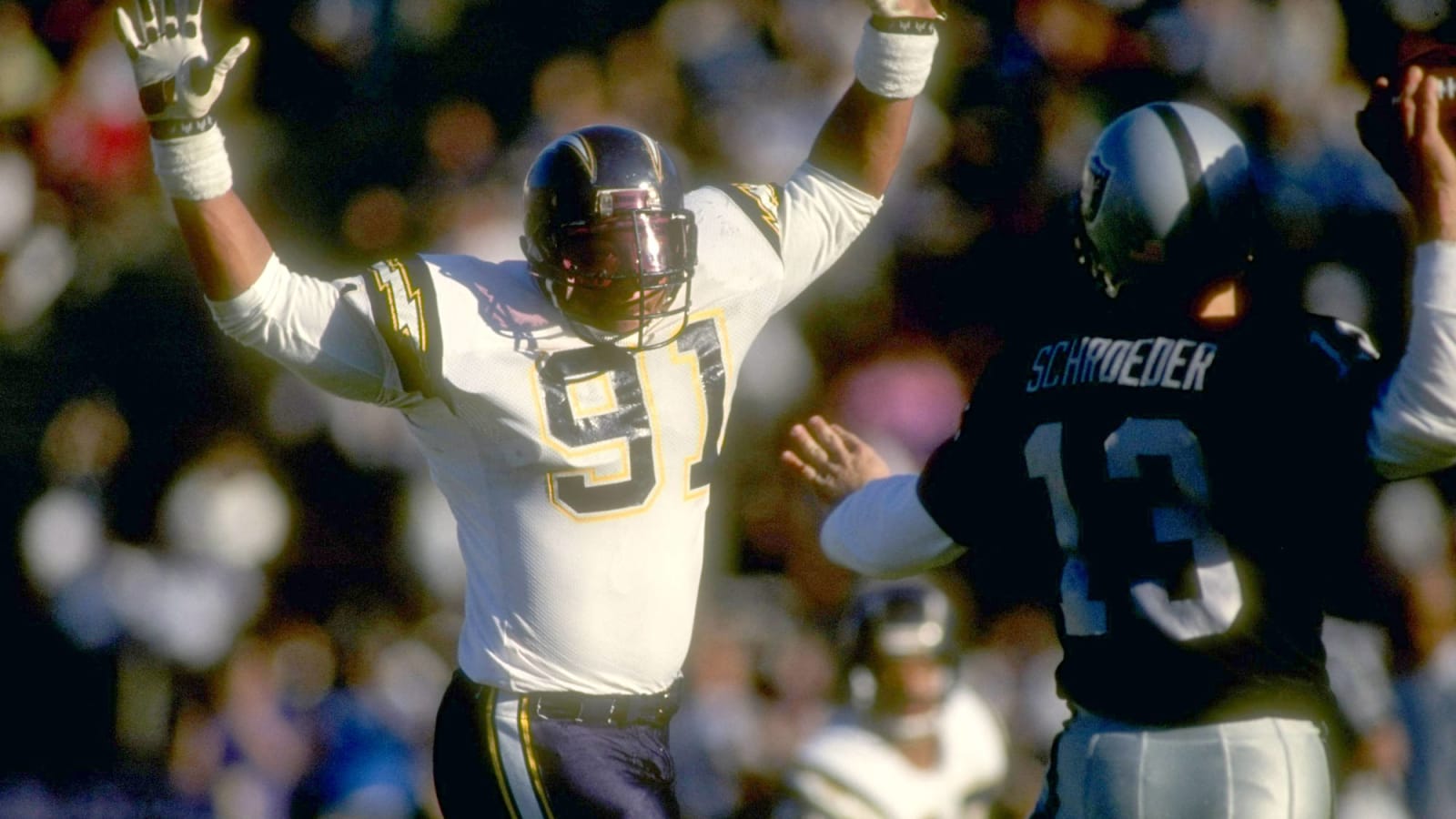
Sports have a way of ensuring some stars are remembered for generations while other standouts' legacies are overlooked. This occurs often in a sport with 22-man lineups. Here are some of the NFL (or AFL) defensive greats whose quality careers have, to some degree, slipped through the cracks. No Hall of Famers or one-year wonders here, just high-end performers who were among their era's best.
Eric Allen
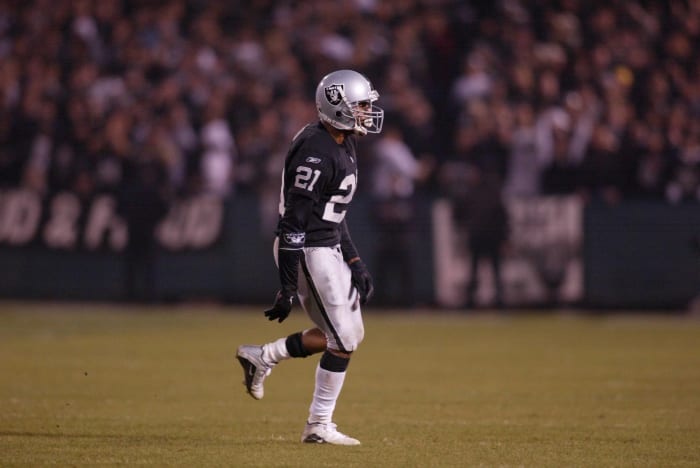
Allen played on Eagles and Raiders teams with legends but stood out as a 14-year starter. A highlight mainstay in Philly, Allen expertly patrolled the flanks for Buddy Ryan's aggressive defense and the Eagles' all-time 1991 unit. He notched four pick-sixes in 1993 -- including this tour de force -- and eight in his career (one shy of Deion Sanders' total). A starter into his mid-30s, Allen finished with 54 INTs and helped the Raiders' senior tour-styled roster return the franchise to the playoffs. Retiring just before Oakland's 2002 Super Bowl run may work against Allen, as does those Eagle teams' playoff underachievement.
Jessie Armstead
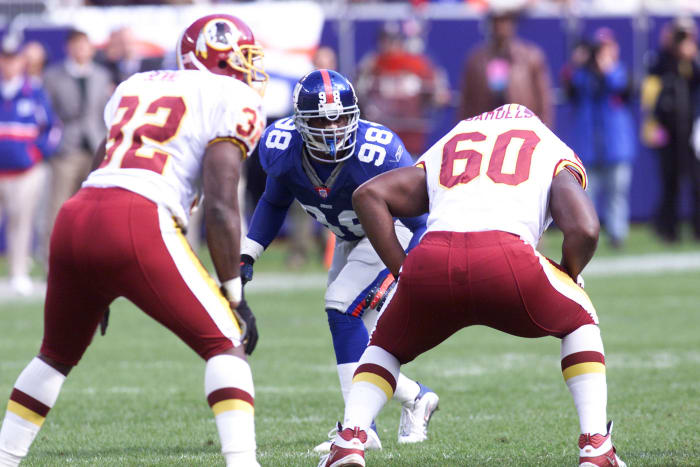
Part of two teams that received "30 for 30" treatment (Carter High and the Miami Hurricanes), Armstead saw some of his Giants teammates become better remembered due to playing in the iconic Super Bowl XLII. The 1993 Round 8 pick was an essential piece of the first 21st-century Giants Super Bowl team. The outside linebacker started for six seasons in New York, making five Pro Bowls, and served as a Michael Strahan wingman of sorts for the 2000 team that lost a one-sided Super Bowl to the Ravens. Despite not being an edge rusher, Armstead recorded 40 sacks. He was essential for three top-10 defenses as the Giants built a contender.
Coy Bacon

The NFL has not retroactively charted sacks before 1982, minimizing the work of previous eras' pass rushers. Bacon qualifies, having taken his sack prowess on the road in the 1970s. Bacon made just three Pro Bowls, but he compiled 130.5 unofficial sacks, per NFL historian John Turney. He registered either 21.5 or an insane 26 (accounts differ) in a 14-game season with the 1976 Bengals. Bacon did that at age 34; the 270-pound edge and inside rusher started for the Rams, Chargers, Bengals and Washington until age 38. Despite a sack total that would rank 15th all time, Bacon was never even a Hall of Fame semifinalist.
Al "Bubba" Baker
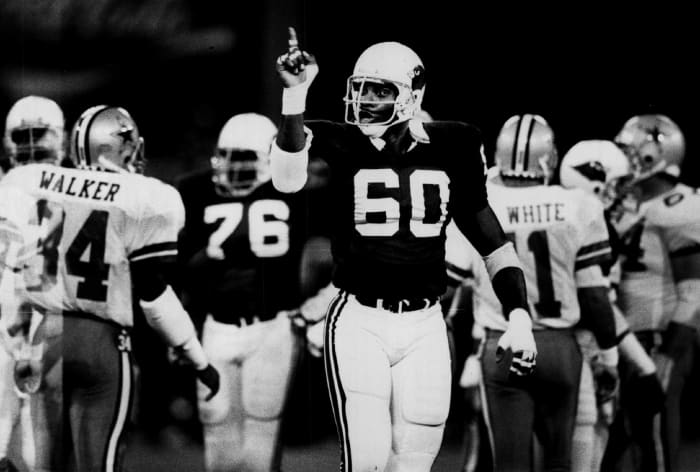
In a similar position to Bacon, Baker came along a bit later (1978) but saw his best seasons lost to history. Particularly, the 6-foot-6 defensive end's rookie slate needs more attention. The Lions credited Baker with 23 sacks as a rookie; Michael Strahan's official record sits at 22.5. The 1978 Defensive Rookie of the Year, Baker finished with an unofficial 132 sacks in a 13-year career spent with the Lions, Cardinals, Vikings and Browns. Housing an ahead-of-his-time bevy of pass-rush moves, Baker made three Pro Bowls and averaged 12.5 sacks a season through 1984. The NFL needs to do better with its sack forefathers.
Bill Bergey
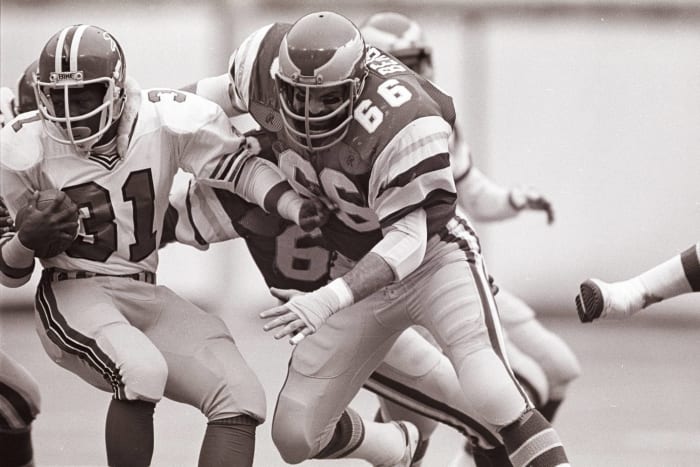
Perhaps the NFL's best middle linebacker for a stretch, Bergey was certainly one of his era's top defenders. An agreement with the quickly defunct World Football League led to the Bengals trading him to the Eagles for an incredible haul in 1974 -- two first-round picks and a second -- but it led to a run of five straight Pro Bowls and eventually the formation of a top-end Eagles defense. The hard-hitting linebacker displayed a remarkable knack for acquiring the football, intercepting 27 passes and recovering 21 fumbles in 12 seasons. Bergey helped the Eagles' No. 1 defense to Super Bowl XV in 1980, his final season.
Matt Blair
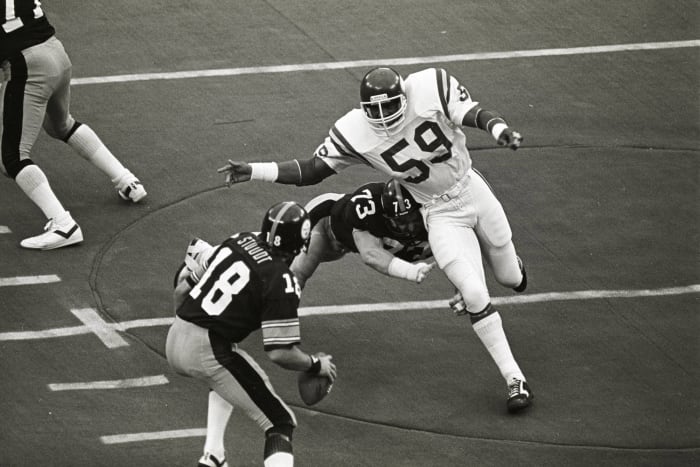
The Vikings' voyages to Super Bowls in the 1970s are generally credited to Fran Tarkenton, the Purple People Eaters defensive line and their other Hall of Famers -- including all-time INT leader Paul Krause and multiple O-linemen. A burgeoning star on some of those teams and the top player on lesser early-'80s Vikes squads, Blair was destined to be underrated. But the all-around outside linebacker talent grew into a premier cog for several seasons. The six-time Pro Bowler is credited with 39 fumbles forced or recovered and 16 interceptions. He also was an all-time field goal and PAT blocker, swatting 19.
Bobby Boyd
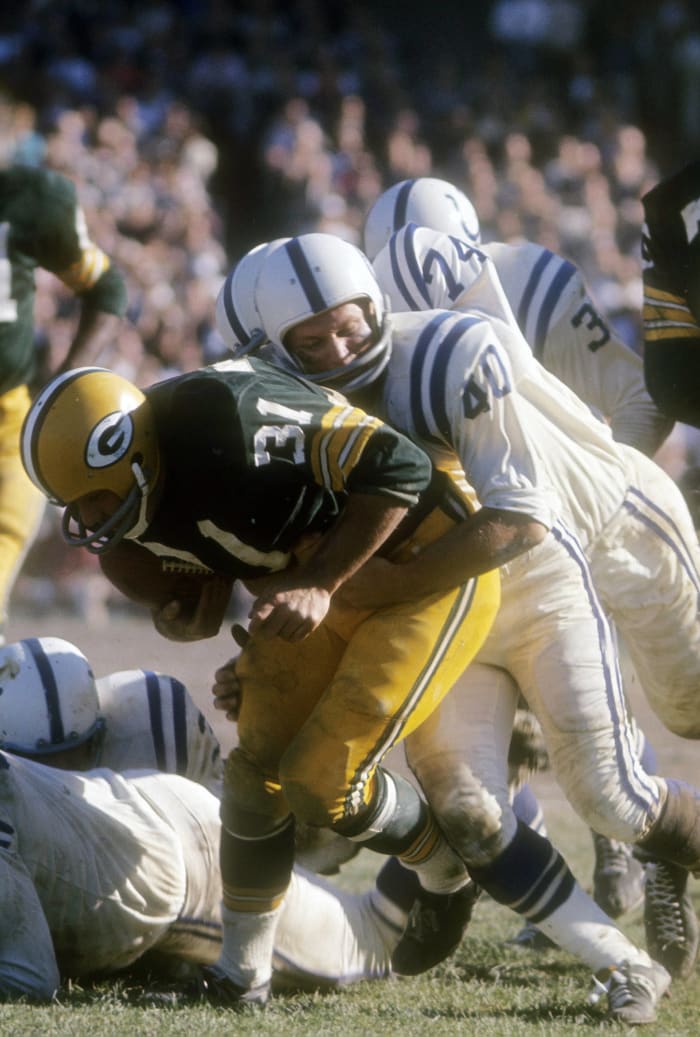
Boyd became one of the NFL's all-time ball hawks, intercepting 57 passes in just nine seasons. That total ranked third in league history when Boyd exited after the 1968 season and still sits fifth among pure cornerbacks. The former college quarterback intercepted at least seven passes in five Colts seasons, wrapping up his career with eight as part of an overlooked (because of Super Bowl III's result) dominant defense. Never a Hall of Fame finalist despite being on the All-Decade 1960s team, Boyd may be enshrined had his career not transpired in between Baltimore's championship seasons (1958-59, '70).
Joey Browner

On the wrong side of the Herschel Walker trade, the late-1980s Vikings paused the Bears' NFC Central run and assembled back-to-back No. 1-ranked defenses. Combining a ferocious style with quality ball skills, Browner was Ronnie Lott's top competition for several years. A Pro Bowler from 1985-90, the Viking strong safety intercepted at least five passes in five straight seasons (including six in the strike-shortened 1987, when Minnesota fell just short of Super Bowl XXII) and landed on three All-Pro first teams. The Vikes running into better teams in January and fading after the Walker deal may have affected Browner's lasting appeal.
Dale Carter
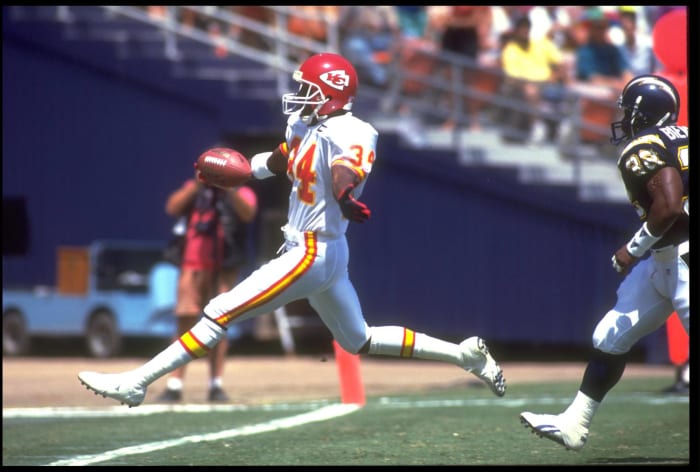
Beyond Derrick Thomas and Neil Smith, the stacked Chiefs defenses of the 1990s housed a star in the secondary. The Chiefs depended on Carter's elite coverage skills during his seven-year Kansas City stay. He lit up the NFL as the 1992 Defensive Rookie of the Year, intercepting seven passes and returning two punts for TDs. The standout cornerback made four straight Pro Bowls from 1994-97 and helped two top-ranked Chiefs defenses cement 13-3 seasons. A full-season drug suspension sidetracked Carter's career in 2000; his post-Missouri seasons (on four teams) obscured the dominance he displayed at his peak.
Ray Childress

With Bruce Matthews and Mike Munchak blocking for Warren Moon's Run and Shoot attack, Oilers defenders were bound to be overshadowed. Despite being at a defensive disadvantage due to its high-octane offensive style, Houston played top-10 run defense from 1988-93. Childress keyed that consistency. The Oilers moved the 1985 top-five pick from defensive end to D-tackle midway through his career. Regardless of position, Childress thrived. He was a five-time Pro Bowler who recorded 76.5 sacks. Three straight 1990s Oiler playoff collapses and their subsequent relocation likely worked against Childress, legacy-wise.
Nolan Cromwell
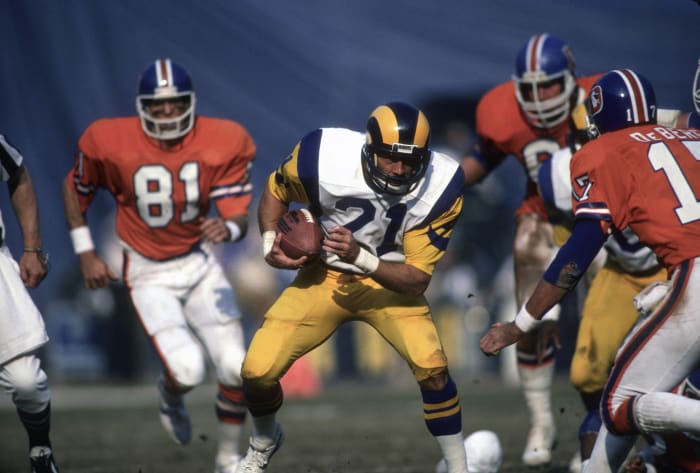
Enjoying a rare transition from 1,000-yard rusher as a college option quarterback to full-time NFL safety, Cromwell shined as a back-line defender for the Rams in the 1970s and '80s. The supreme athlete vacillated between safety and slot cornerback, serving as a game-wrecking chess piece on Bud Carson's defenses early in his career and a steady hand for the John Robinson-era Rams teams that returned the franchise to playoff mainstay. Cromwell was the best safety in the game for a few years, earning All-Pro acclaim from 1980-82 and notching 20 INTs over his first three years as a starter (1979-81).
Dave Grayson
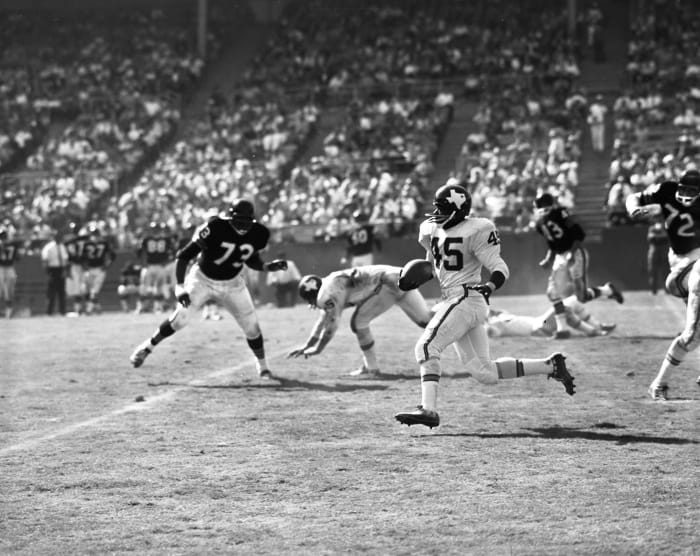
Whether at safety, cornerback or kick returner, Grayson could locate running room. An AFLer in nine of the league's 10 seasons -- as a Dallas Texan/Kansas City Chief and Oakland Raider -- Grayson retired after the 1970 season and did so with the fifth-most interception return yards ever. Fifty years later, Grayson's 933 yards remain in the top 20. The Texans/Chiefs corner and Raiders safety intercepted 48 passes -- his 47 in the AFL were by far the most in league history -- and was a six-time Pro Bowler. He ended his career with six Raiders seasons, playing a role in the franchise's ascent.
Rich "Tombstone" Jackson
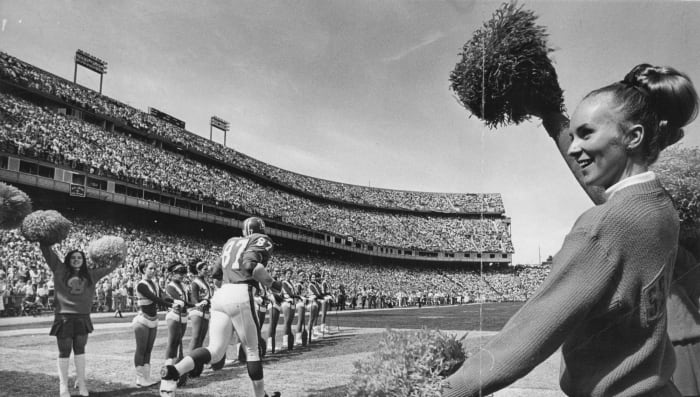
Jackson landing with a better team and staying healthier a bit longer may have vaulted him into the Hall of Fame, but the feared defensive end's status with the then-woeful Broncos and knee injuries cutting his career short walled off that avenue. Former SI NFL czar Paul Zimmerman slotted Jackson on his All-Century team, and the Broncos credit the three-time All-Pro with three straight double-digit sack seasons (in 14 games) from 1968-70. Jackson's freakish strength enabled him to be a dominant run player as well. Jackson's prime being limited to barely four seasons has relegated him to NFL folklore, but the stories are legendary.
Albert Lewis

Had Lewis played during the social media era, he would be one of the NFL's most popular players. A quality cornerback who dropped 4.3-second 40 times and was part of a top-tier Chiefs secondary, Lewis carried a skill that generated a slew of unusual highlights. He finished a 16-year career as the NFL's all-time punt blocker, spoiling 11 regular-season punts. Lewis added a block-six in a 1986 wild-card game, wrapping a season in which he blocked four punts and tackled a punter for a de facto fifth. This preceded a four-year run of Pro Bowls. Lewis (42 INTs) also reeled off a 1990 stretch with three blocks in three games. An all-action player.
Gene "Big Daddy" Lipscomb
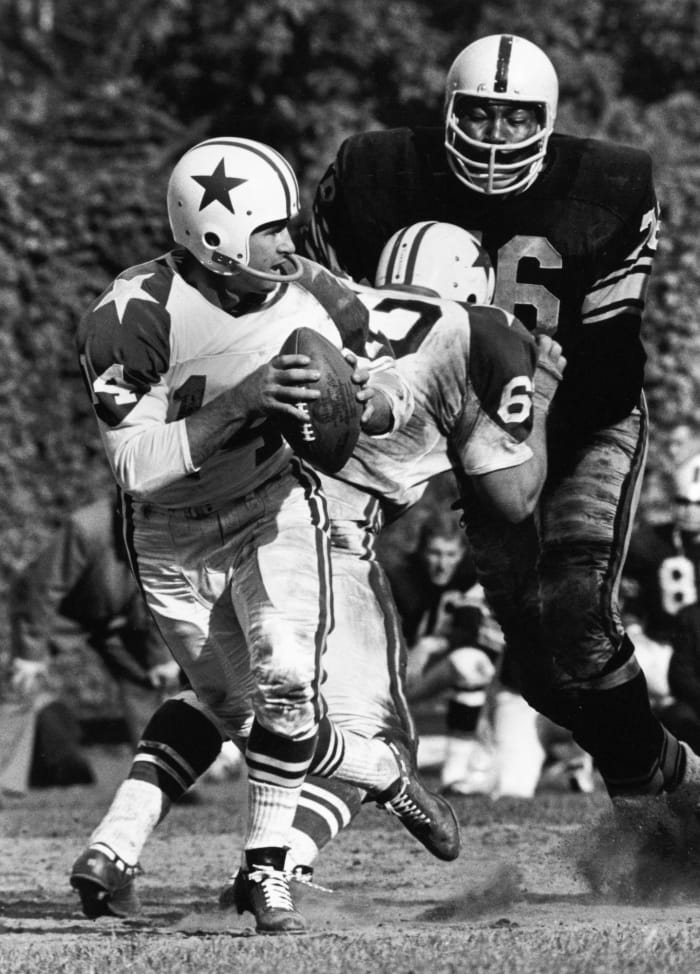
The late-1950s Colts championship teams featured two Hall of Fame defensive linemen and a gargantuan defensive tackle working with them. A part-time wrestler, the 6-foot-6, 300-pound Lipscomb towered over his competition. But the nomadic behemoth moved exceptionally well for a player his size, regularly chasing down ball carriers for the Rams, Colts and Steelers. "Big Daddy" did not join Gino Marchetti or Art Donovan in the Hall of Fame and tragically died of a drug overdose at age 31 -- after his third Pro Bowl season -- but he made enough of an impression to be named a finalist for the NFL's 100th Anniversary Team last year.
Greg Lloyd
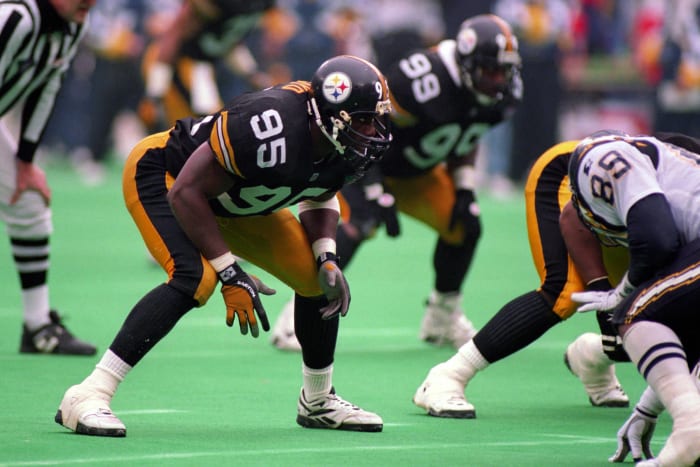
Kevin Greene is in the Hall of Fame from the Steelers' 1990s "Blitzburgh" defense, but Lloyd was the heart of the unit that led the franchise back to prominence. A dominant outside linebacker, Lloyd stood as maybe the 1990s' most intimidating player and managed to operate as a traditional linebacker on some downs and Greene's edge-rushing mate on others. Lloyd forced a stunning 27 fumbles from 1991-95 -- a span featuring five Pro Bowls and three All-Pro nods -- and landed as an All-Decade performer. Injuries shortened Lloyd's prime, but he was one of the NFL's best players for several years.
Karl Mecklenburg
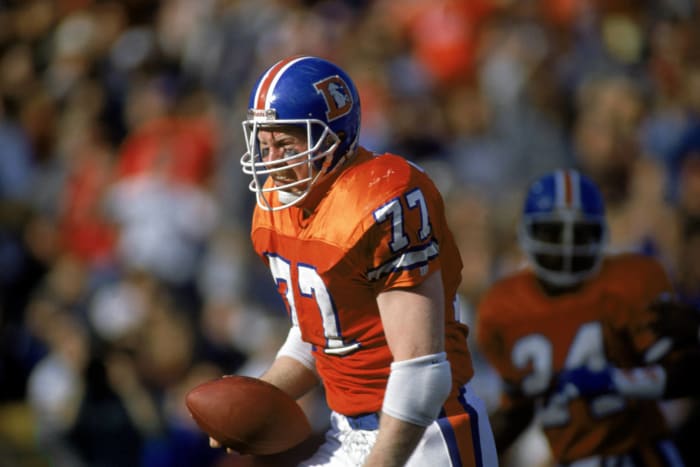
The ability to function as a stalwart at just about every front-seven position ended up working against Mecklenburg. He was the extraordinarily rare inside linebacker who spent many passing downs rushing quarterbacks from a defensive end position. This multidimensionality limited Mecklenburg's numbers, but he anchored Denver's front seven on three Super Bowl defenses. The 12-year veteran amassed 79 sacks and was a first-team All-Pro three times in the 1980s. The Hall of Fame has made a few worthy Bronco defenders' roads difficult, but Mecklenburg's uniquely productive career probably warrants enshrinement.
Tommy Nobis
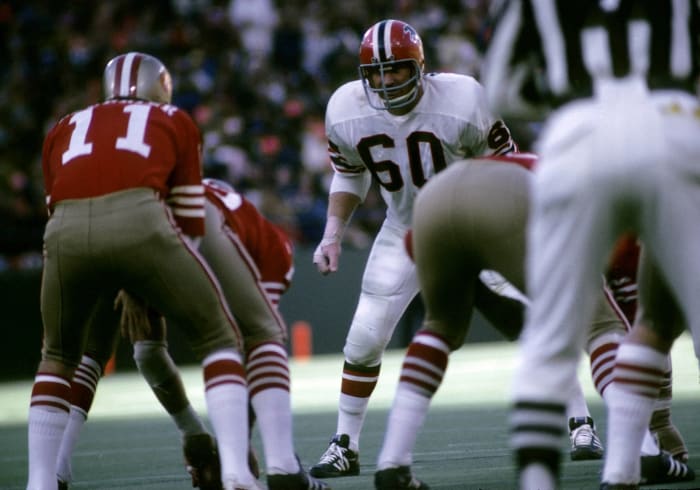
Nobis was essentially sentenced to NFL obscurity by being sent to an expansion team -- one that never made the playoffs during his career. A superstar at Texas who played both ways, the middle linebacker went No. 1 overall to the expansion Falcons in 1966. Despite Nobis unleashing his sideline-to-sideline tackling ability immediately and making the Pro Bowl in his first three seasons, this had little impact on woeful teams. Nobis led the Falcons in tackles in nine of his 11 seasons, but knee injuries slowed him in the latter stages of his career. He drew comparisons to Butkus and Nitschke but enjoyed a lower-profile career.
Leslie O'Neal
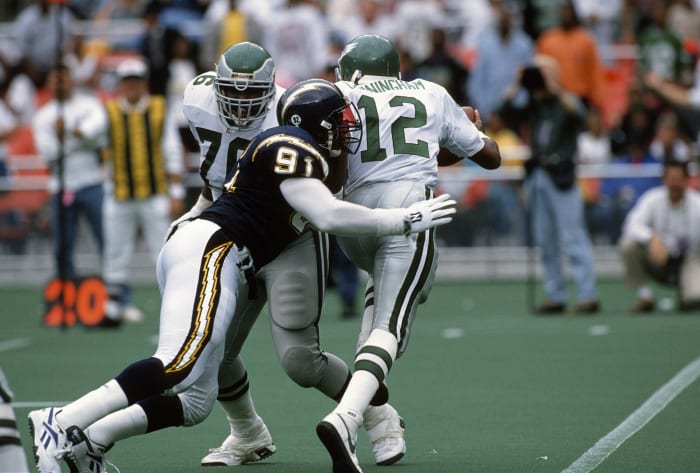
A master craftsman on the edge, O'Neal was one of the NFL's best pass rushers for over a decade. The longtime Chargers defensive end blazed to eight 10-plus-sack seasons from 1986-97 and sits 14th with 132.5 career sacks -- more than Dwight Freeney or Hall of Famer Charles Haley. Although O'Neal was the top pass rusher on the Chargers' 1994 Super Bowl team, Junior Seau led the '90s Bolts defenses. O'Neal shined on forgettable pre-Seau teams, earning Defensive Rookie of the Year acclaim in 1986, and produced into his 30s on forgettable late-'90s Rams squads as well. But he has fallen short of Canton.
Lemar Parrish and Ken Riley
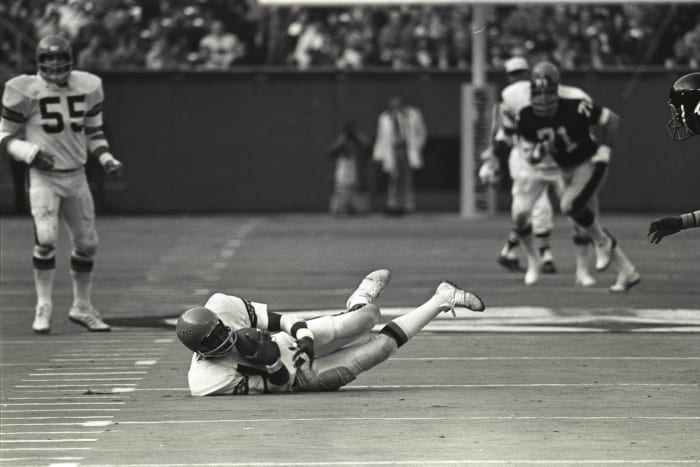
One of the NFL's lowest-profile franchises has seen many contributors' work lost to history, but their two ace cornerbacks from the 1970s deserve more recognition. Riley's 65 INTs remain fifth in NFL history and first among pure corners; he anchored the Cincinnati secondary as a 15-year starter. Though never a Pro Bowler, Riley picked off eight passes at age 36 in 1983 to earn All-Pro acclaim. The flashier Parrish was the better regarded of the two, soaring to eight Pro Bowls in a 13-year career (with Cincinnati, Washington and Buffalo). He compiled 12 TDs -- five as a return man. Together, he and Riley combined for nine pick-sixes and helped form arguably the best position group in Bengals annals.
Michael Dean Perry
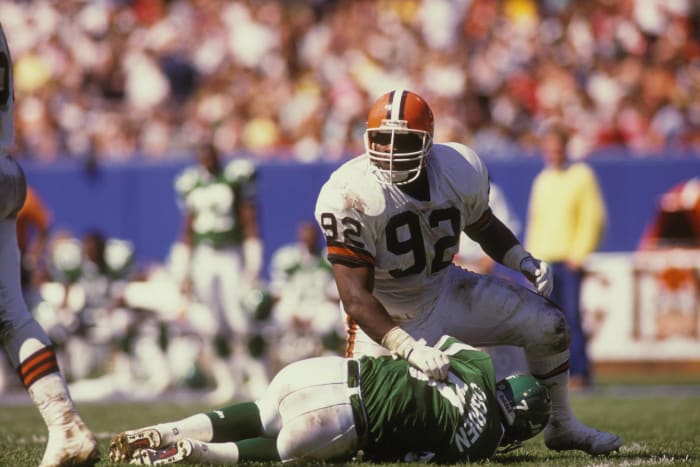
William "The Refrigerator" Perry did not make a Pro Bowl; his younger brother went to six. Yet outside of Cleveland, the guy with the iconic nickname is far better known. This unusual Q-rating gap aside, the younger Perry was one of the NFL's best defensive tackles for many years. Short like his brother, the 6-foot-1 interior cog was an All-Pro by his second season -- when he helped the Browns to their most recent AFC championship game (1989). Stout against the run as well, Perry is Cleveland's No. 2 all-time sacker (51.5). Though Perry made his final Pro Bowl in Denver, the Broncos cut him a month before their Super Bowl XXXII win.
Isiah Robertson
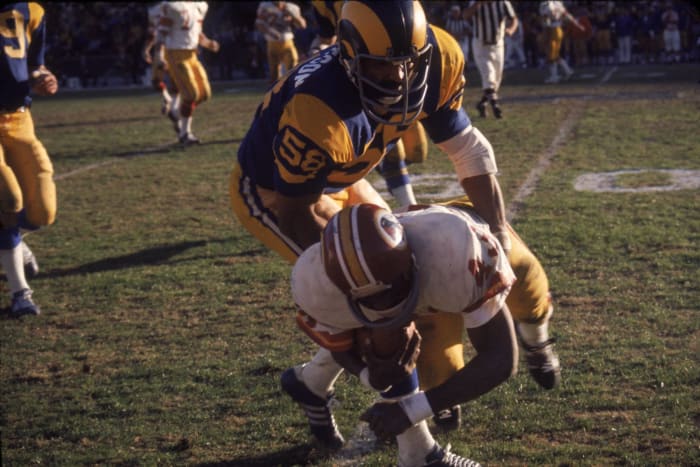
"Butch" Robertson was the guy Earl Campbell trucked on that famous uniform-unraveling run, but he accomplished plenty outside of that memorable visual. Possessing supreme speed for a 1970s linebacker, Robertson intercepted 25 passes and forced 24 fumbles. The six-time Pro Bowl outside 'backer earned Defensive Rookie of the Year honors in 1971, and his snazzy pick-six in the 1974 divisional round snapped a two-decade-plus Rams championship-game drought. Robertson provided a big boost to a Rams defense exiting its "Fearsome Foursome" era and helped the Bills to multiple playoff berths in his 30s.
Fred Smerlas
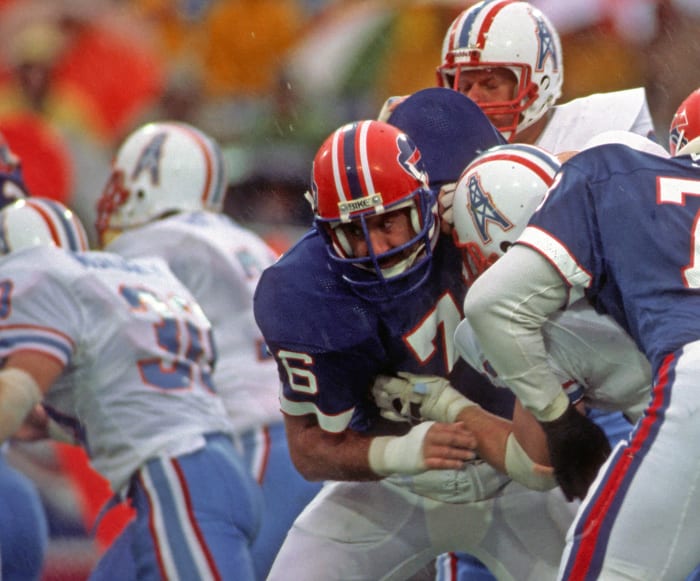
Joining Robertson on some forgotten early-'80s Bills playoff teams, Smerlas hung around through several subsequent lean years. Departing the Bills months before their Super Bowl streak began further obscured the five-time Pro Bowler. One of the forefathers of the often thankless 3-4 nose tackle position, Smerlas thrived at the point of attack as the Bills rose to the No. 1 defense in 1980. The team fell off for much of the '80s, but Smerlas was still around when they resurfaced -- blocking a field goal to seal the Bills' 1988 AFC East title. Smerlas played six games as a 49er; they came for the 1990 team that just missed its three-peat shot.
Abe Woodson
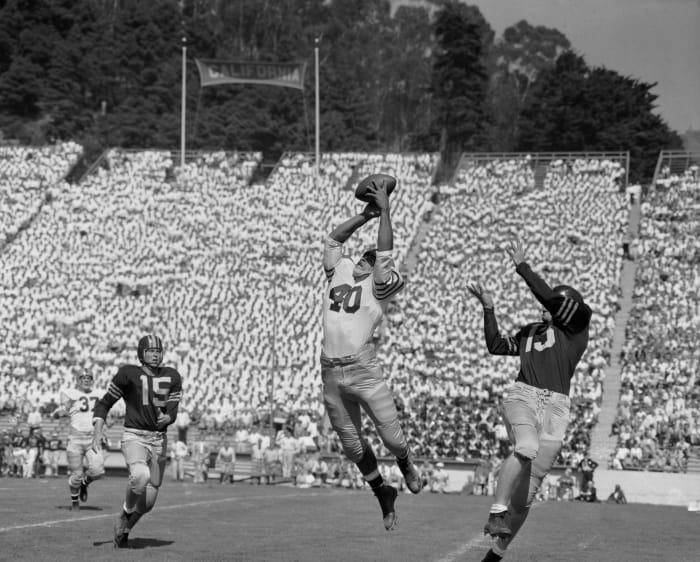
One of the NFL's first great return specialists, Woodson also operated as a lockdown cornerback for several 49ers teams from the late 1950s to mid-'60s. Woodson blazed to seven return touchdowns, including a 1963 season in which he took three kicks back. (His 105-yarder in 1959 required unusual navigation.) As a corner, Woodson intercepted just 19 passes but was one of the first players who forced quarterbacks to look elsewhere for completions. Woodson never playing in a playoff game in 10 seasons with the 49ers and Cardinals left him prone to be somewhat omitted as the decades passed.
Louis Wright
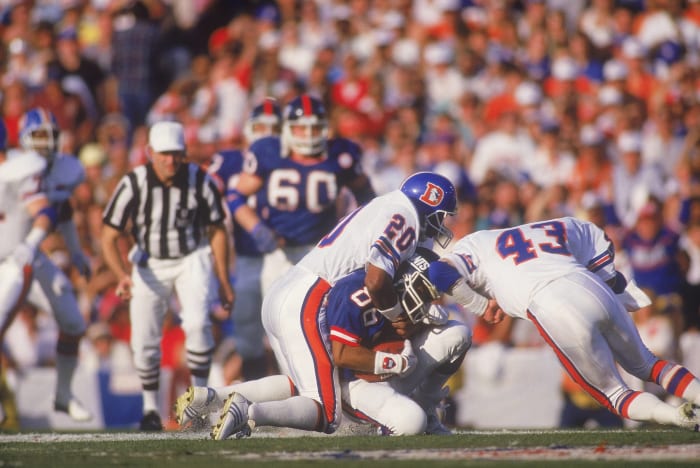
Irking Bronco fans for years, the Hall of Fame has passed on a few of the eight-Super Bowl franchise's greats. Despite being an All-Decade cornerback viewed alongside Hall of Famers Mel Blount and Mike Haynes in the late 1970s and early '80s, Wright was never a finalist. Wright's 26 INTs are largely a product of defenses avoiding him, and no advanced metrics existed to illustrate coverage skills at the time. But he was a true shutdown corner who played in two Super Bowls -- both blowout losses. The "Orange Crush" defense ceded 10.6 and 12.4 points per game in 1977 and '78, respectively. It does not reach those heights without Wright.
Sam Robinson is a Kansas City, Mo.-based writer who mostly writes about the NFL. He has covered sports for nearly 10 years. Boxing, the Royals and Pandora stations featuring female rock protagonists are some of his go-tos. Occasionally interesting tweets @SRobinson25.
More must-reads:
- Winners and losers from Day 2 of the 2024 NFL Draft
- Eagles move up in draft to select another DB
- The '100 catches in an NFL season' quiz
Breaking News
Customize Your Newsletter
 +
+
Get the latest news and rumors, customized to your favorite sports and teams. Emailed daily. Always free!
Use of this website (including any and all parts and
components) constitutes your acceptance of these
Terms of Service and Privacy Policy.

